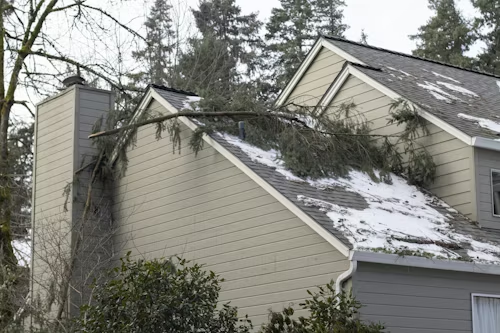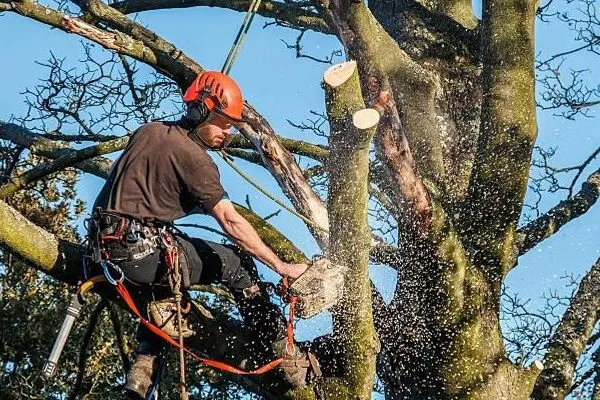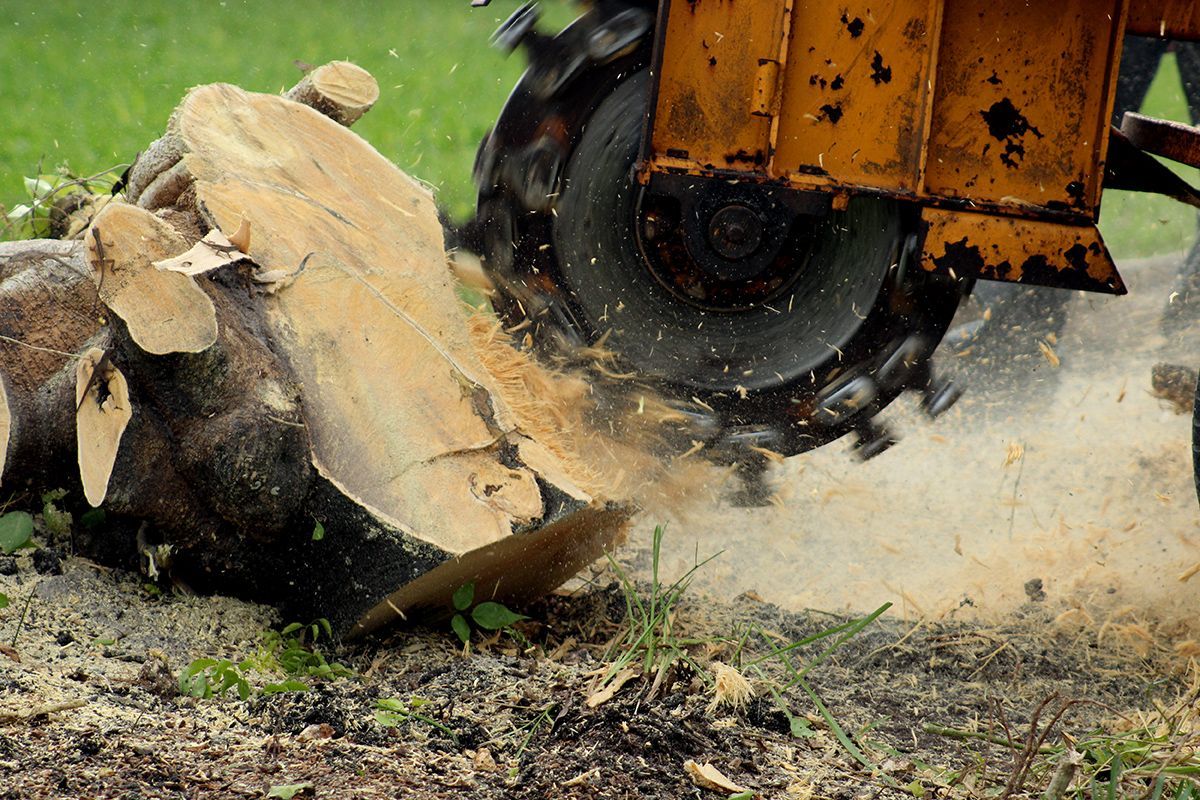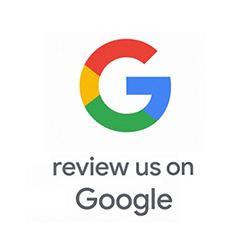Pete & Ron’s Tree Service Blog

A dying tree is more than just an eyesore—it can be a serious threat to your property and safety. When a tree loses its structural integrity, it becomes far more likely to fall during storms or even on calm days. Homeowners often overlook early indications of decline, but taking action before a tree collapses can prevent costly damage and potential injuries. At Pete & Ron’s Tree Service, we provide expert tree removal in the greater Tampa, FL area. Here are four warning signs that a tree may be dying and should be removed to avoid becoming a dangerous hazard. Large Sections of Dead or Falling Branches Oftentimes, one of the earliest symptoms of a dying tree is the presence of dead, brittle limbs. If branches snap easily, have no leaves during the growing season, or fall frequently, the tree is likely struggling internally. Dead branches weaken the tree’s overall structure and can fall without warning, especially during storms. When much of the canopy is dead, it’s a strong indication that the tree may not recover and should be evaluated for removal. Trunk Damage, Splits, or Cavities The trunk is the core support system of the tree, and any severe damage can compromise its stability. Deep cracks, large holes, peeling bark, and areas of missing wood are all red flags. Cavities caused by decay or pests weaken the tree from the inside, making it unable to support its own weight. If the trunk shows extensive decay, the tree may be at risk of falling very soon and should be removed promptly. Fungal Growth at the Base Fungi can be a significant sign of internal decay. Fungal growth at the base of a tree often means that the root system or lower trunk is rotting. Once decay has spread to the roots, the tree loses its anchoring strength and can topple suddenly—even in mild weather. Persistent or widespread fungal growth can signal a serious health issue that should be assessed by a professional. Leaning or Shifting Position A tree that suddenly starts leaning or shows signs of shifting soil around its base may be in the process of uprooting. This is especially dangerous after storms, flooding, or high winds. While some trees naturally grow at an angle, a new or worsening lean usually indicates root weakness or failure. A leaning tree poses an immediate hazard and should be inspected and likely removed. Tree Removal in Tampa, FL For tree removal in Tampa and the surrounding area, contact Pete & Ron’s Tree Service. Feel free to request a free estimate for tree services in Tampa, St. Petersburg, and the surrounding area!

Tree removal might seem like a simple weekend project, but in reality, it’s one of the most dangerous tasks a property owner can attempt without proper training. Cutting down a tree safely requires professional expertise, specialized tools, and extensive experience. Experienced arborists are trained to handle removals efficiently and safely, protecting both people and property. At Pete & Ron’s Tree Service, we provide expert tree removal in the greater Tampa, FL area. Here are four important reasons why tree removal should be handled by arborists. Professional Knowledge and Assessment Skills Arborists are trained to understand tree structure and stability. Before removing a tree, they evaluate its condition, lean, weight distribution, and proximity to nearby structures or power lines. This knowledge allows them to plan a safe removal strategy that minimizes risk. Without this professional assessment, a homeowner could misjudge the tree’s fall direction or internal decay, leading to severe damage or injury. Arborists take every precaution to ensure the process is carried out with precision and safety in mind. Proper Equipment and Safety Gear Tree removal requires more than just a standard chainsaw—it demands ropes, harnesses, rigging systems, and sometimes other heavy equipment to control the direction and pace of a falling tree. Experienced arborists have access to this specialized equipment and know how to use it effectively. They also wear protective gear to guard against falling debris. Attempting to remove a large tree without this equipment can result in severe injuries. Professionals are trained to operate safely in challenging conditions that would be risky for untrained individuals. Protection for Your Property Removing a tree in a residential area is rarely straightforward. Branches can extend over rooftops, driveways, and power lines. Without careful planning, a falling limb or trunk section could cause thousands of dollars in damage. Arborists use controlled cutting and lowering techniques to remove trees piece by piece when necessary, preventing harm to surrounding structures and landscaping. Thorough Cleanup and Disposal Tree removal doesn’t end when the trunk hits the ground. Large amounts of debris, branches, and wood remain, requiring proper disposal. Arborists handle cleanup quickly and can grind the stump and haul away debris. This saves you time, effort, and the hassle of dealing with heavy materials. Tree Removal in Tampa, FL For expert tree removal in Tampa and the surrounding area, contact Pete & Ron’s Tree Service. Feel free to request a free estimate for tree services in Tampa, St. Petersburg, and the surrounding area!

When tall trees become unstable, they can quickly turn into serious safety hazards. A falling tree can cause significant damage to homes, vehicles, and power lines—and even put lives at risk. While healthy trees are generally stable, certain signs indicate that a tree may be at risk of suddenly toppling. At Pete & Ron’s Tree Service, we provide expert hazardous tree identification and removal in the greater Tampa, FL area. Being aware of these warning signs allows you to act quickly and call a professional arborist before disaster strikes. Leaning or Shifting Position A tree that has started leaning suddenly or has increased its tilt over time may be in danger of falling. While some trees do grow at an angle, a new or worsening lean often points to instability in the roots or soil. You might also notice cracks in the ground near the base or exposed roots on one side, suggesting that the tree’s foundation is compromised. These are strong indicators that the tree could topple in strong winds. Cracked Trunk The trunk serves as the main support structure for a tree. When it develops large cracks, cavities, or splits, the tree’s stability is severely weakened. A split trunk often results from storm damage, lightning strikes, or internal decay. Once a tree’s core is compromised, it can fail suddenly under its own weight. If you see deep fissures or hollow areas in a large tree’s trunk, it’s important to have it inspected right away. Damaged or Decaying Roots Roots anchor a tree and absorb vital nutrients. When they become diseased, decayed, or damaged, the entire tree can become unstable. Signs of root problems include fungus or mushrooms growing around the base, heaving soil, or visible rot. Because much of the root system is underground, damage often goes unnoticed until it’s too late. If you suspect root issues, an experienced arborist can assess the extent of decay and determine whether removal is necessary. Fungal Growth and Internal Decay The presence of fungi on the trunk or base is a warning sign of internal rot. Even if the tree appears relatively healthy from the outside, decay inside the wood can destroy its strength. A hollowing or spongy trunk means the tree may no longer be able to support its own weight. Tree Removal in Tampa, FL For tree removal in Tampa and the surrounding area, contact Pete & Ron’s Tree Service . Feel free to task for a free estimate for tree services in Tampa, St. Petersburg, and the surrounding area!

At first, dead trees on your property may not seem like a problem, but they can quickly become serious safety and financial liabilities. While it might be tempting to leave them alone or attempt removal on your own, the risks far outweigh the benefits. Professional tree removal ensures that hazards are addressed properly. At Pete & Ron’s Tree Service, we provide expert tree removal in the greater Tampa, FL area. Here are five important reasons why dead trees should be removed by a professional as soon as possible. Prevent Safety Hazards Dead trees lose their structural integrity over time, which makes them prone to breaking or falling, especially during high winds. Large branches can snap without warning, putting nearby people at risk. Professional removal eliminates this danger before an accident happens. Experts have the training and equipment to safely take down a tree without endangering anyone nearby. Avoid Property Damage A dead tree close to your home, garage, fence, or utility lines can cause costly damage if it topples. Even a smaller tree can cause major destruction if it falls in the wrong direction. Professionals carefully plan the removal process, ensuring the tree comes down safely and without harm to your property. This preventive step can save you thousands of dollars in potential repairs. Prevent Pest Infestations Dead trees are magnets for pests like termites, carpenter ants, and beetles. Once these insects take up residence in a dead tree, they often spread to healthy trees or even move into your home. Professional removal eliminates this breeding ground. Improve Your Landscape’s Health and Appearance A dead tree detracts from the overall look of your yard, making it appear poorly maintained. It can also hinder the growth of surrounding plants by taking up space and blocking light. Removing the tree not only improves curb appeal, but also helps create a healthier environment for the rest of your landscape to thrive. Ensure Safe and Proper Removal Tree removal is a complex and potentially dangerous task that should not be attempted without the right equipment and expertise. Professional arborists understand how to handle dead trees of all sizes, using proper techniques to prevent accidents. Hiring a professional is the best way for the removal to be done safely, efficiently, and in compliance with local regulations. Tree Removal in Tampa, FL For tree removal in Tampa and the surrounding area, contact Pete & Ron’s Tree Service. Feel free to request a free estimate for tree services in Tampa, St. Petersburg, and the surrounding area!

Tree stumps left behind after tree removal can create more problems than many homeowners realize. While some might consider leaving a stump in place to save time or money, the long-term downsides often outweigh the short-term convenience. At Pete & Ron’s Tree Service, we provide expert stump grinding and removal in the greater Tampa area. Here’s a closer look at how stump removal can enhance your property. Improved Aesthetics One of the most immediate advantages of stump removal is the visual improvement. An old stump can make even a well-maintained yard look neglected. Whether you’re looking to impress guests or simply enjoy a more beautiful outdoor space, removing stumps helps create a cleaner appearance. This can be particularly valuable if you’re preparing your home for sale and want to leave a strong first impression. Eliminate Tripping Hazard & Potential Equipment Damage Old stumps pose tripping hazards, especially if grass or weeds grow up around them. They can also increase the risk of damage to lawn equipment like mowers and line trimmers. With the risk of injury and equipment damage reduced, your outdoor areas become more safey usable. Prevent Pest Infestations Decaying stumps are attractive nesting grounds for a variety of pests, including ants and termites. Once pests settle into an old stump, it’s only a matter of time before they move on to other parts of your yard—or even your home. By having the stump completely removed by a professional, you eliminate a potential entry point for infestations and protect your property from pest-related damage. Better Landscaping Options A leftover stump can limit what you can do with your yard. It takes up space that could otherwise be used for planting flowers, laying down sod, installing a garden bed, or adding outdoor furniture. With the stump removed and the ground leveled, you’re free to pursue a wider range of landscaping designs. Protection Against Regrowth In some cases, a stump can produce new shoots that continue to grow long after the tree has been cut down. These sprouts can be persistent and unattractive, and trying to keep them in check often becomes a recurring chore. Professional stump removal includes grinding down the roots to prevent regrowth, ensuring that the tree doesn’t keep returning. Stump Grinding & Removal in Tampa, FL For stump removal in Tampa and the surrounding area, contact Pete & Ron’s Tree Service. Feel free to request an estimate for tree services in greater Tampa!

At Pete & Ron’s Tree Service, we know that ugly stumps can ruin the look of your yard and become a safety hazard. That’s why we offer professional stump removal service in Tampa, FL. Whether you’re dealing with one stubborn stump or an entire yard full of them, our team is ready to help. Don’t wait for pests or roots to cause more damage, call (813) 876-4444 to schedule your stump removal today . Why You Need Professional Stump Removal Service Tree stumps aren’t just eyesores. They get in the way of landscaping, pose tripping risks, and attract unwanted pests like termites and ants. Over time, they can also grow new shoots or rot from the inside out. Trying to remove a stump on your own can be frustrating, dangerous, and expensive if you don’t have the right tools. Our stump removal service is designed to save you time, energy, and money while protecting your yard and home. How Our Stump Removal Service Works Pete & Ron’s Tree Service uses industry-grade stump grinders to safely and efficiently remove tree stumps of all sizes. We make sure the process is smooth, fast, and mess-free. Here's what to expect: Step 1: We assess the stump size, location, and root system. Step 2: Our team grinds the stump below ground level. Step 3: We remove all debris and level the ground, so it's ready for grass, sod, or landscaping. No guesswork. No surprises. Just professional results with every stump removal service. Benefits of Choosing Our Stump Removal Service There are real advantages to hiring Pete & Ron’s Tree Service for your stump removal service in Tampa: Curb Appeal: Removing stumps makes your yard look clean and well-kept. Pest Control: Eliminate wood-attracting insects that live in old stumps. Safety: Avoid tripping hazards and injuries in high-traffic areas. Land Use: Reclaim usable space for gardens, patios, or fresh turf. We make it easy to improve your property with zero hassle. Why Tampa Residents Trust Our Stump Removal Service With decades of experience, Pete & Ron’s Tree Service has built a solid reputation for an affordable, high-quality stump removal service. We serve both homeowners and businesses throughout the Tampa Bay area. Here’s why our customers choose us: Licensed & Insured Crew. Locally Owned & Operated Since Day One. Upfront Pricing with No Hidden Fees. Fast Scheduling & On-Time Service. Top-Rated Customer Reviews. We’re not just here to grind stumps, we’re here to make your yard safer, cleaner, and more beautiful. When to Schedule a Stump Removal Service Wondering if now is the right time? If you’ve recently had a tree removed, or there are old stumps that are becoming a nuisance, it’s time to take action. Stump removal service is ideal: After tree removal. Before new landscaping or lawn projects. When pests are visible. If roots are causing cracks or damage. To improve drainage and soil quality. Waiting too long only makes things worse, don’t put it off. The Hidden Costs of Avoiding Stump Removal Service Ignoring old stumps might seem harmless, but it can cost you more later. Root systems left in place can damage plumbing, sidewalks, or foundations. Rotting stumps invite decay and lower your property value. Our professional stump removal service prevents these risks, saving you from future repairs and giving you peace of mind. Say Goodbye to Unsightly Stumps. Call Now for Stump Removal Service! Your property deserves better than a yard full of dead tree stumps. Take back your space with the most trusted stump removal service in Tampa, FL. Call (813) 876-4444 today and let Pete & Ron’s Tree Service handle the heavy lifting. Our team is fast, friendly, and ready to help you clear your yard once and for all. Contact us to schedule your expert stump removal service .

